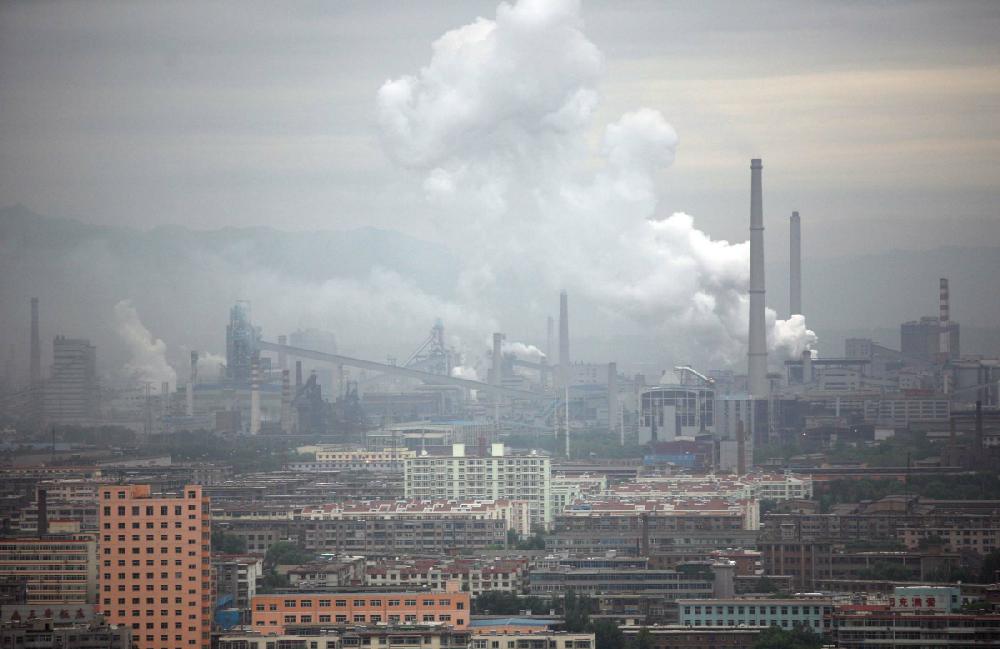ANCHORAGE, Alaska -- During his historic visit to the Alaska Arctic, President Barack Obama put a spotlight on the plight of people in rural Alaska, where Alaska Natives and others toil under rough-and-tumble conditions.
Closing out his three-day tour of Alaska, Obama first dropped in on the fishing village of Dillingham in western Alaska to inspect one of the biggest sockeye salmon runs in the world and underscore the need to "protect this incredible natural resource, not just for the people whose livelihood depends on it, but for the entire country."
From there, he was traveling north of the Arctic Circle to the town of Kotzebue, a regional hub with a population of barely more than 3,000.
Obama's trip, the first by a sitting president to the Arctic, puts on rare display the way of life and daily challenges in Alaska's more than 200 far-flung rural villages. Outside of Kotzebue, 1 in 5 in the Alaska Arctic doesn't have a proper kitchen, according to the U.S. Census Bureau. And even more lack complete plumbing. Instead, many use the "honey bucket" system -- 5-gallon drums that serve as makeshift toilets are emptied into nearby sewage lagoons.
The president's goal was to showcase the havoc he said human-influenced climate change is wreaking on Alaska's delicate landscape: entire rural villages sinking into the ground as permafrost thaws, protective sea ice melts and temperatures climb.
Alaska Natives have joined the president in sounding the alarm on climate change. Yet the obstacles they confront daily in rural Alaska extend far deeper, raising questions about whether the federal government has done enough to help some of the country's most destitute citizens.
It is a life of subsistence hunting for bowhead whales, walruses and seals, a proud tradition of dependence on the land that poses immense logistical challenges.
"The vast majority of Americans have no idea there are dozens of communities in Alaska that live like this," Sen. Dan Sullivan, R-Alaska, said in an interview. "It's unacceptable, and we need to do more to fix it."
Even as Obama's travels took him near the Bering Sea, U.S. officials reported the presence of five Chinese navy ships in the sea -- the first time they have been observed there.
White House spokesman Josh Earnest said U.S. officials don't view the Chinese vessels to be a threat but he added that the reason for their presence "is still unclear."
The ships were participating in a military exercise with Russia in previous days and then broke off to head into the Bering Sea, according to a U.S. defense official who was not authorized to discuss the matter publicly so spoke on condition of anonymity.
"We respect the freedom of all nations to operate military vessels in international waters in accordance with international law," said Navy Cdr. Bill Urban.
In his visit to Kanakanak Beach in Dillingham, Obama inspected all aspects of the fishing operation and pronounced a sample of salmon jerky to be "outstanding." He took it in stride when he noticed salmon spawning on his shoes, and went on to deliver a serious environmental message.
"Hopefully by us coming here, we're highlighting the need for us to keep this pristine and make sure that this is there for the children and grandchildren, great-grandchildren of all these wonderful fishermen," Obama said.
With no roads to their villages, residents in rural Alaska are dependent on boats, snowmobiles and bush planes -- weather permitting -- to ferry them to rare doctor visits or other business.
At the same time, temperatures in the Arctic are rising twice as fast as anywhere else on Earth, the National Oceanic and Atmospheric Administration has said, and bearing profound changes for Alaska's landscape.
Permafrost, the layer of frozen ice under the surface, is thawing and causing homes, pipes and roads to sink as the soil quickly erodes. Some 100,000 Alaskans live in areas vulnerable to melting permafrost, the Environmental Protection Agency estimates.
And in coastal Alaska, sea ice that once offered critical protection is melting, exposing coastlines, causing more extreme ocean storm surges and risking mass emergency evacuations.
It's enough that the 400 or so residents of Kivalina, an Arctic town on a skinny barrier island along the Chukchi Sea, have decided they have no choice but to pick up and move. Kivalina is one of about a dozen other rural villages that have voted to relocate to more stable terrain inland despite the hurdles it presents in maintaining their traditions, such as hunting marine mammals.
Information for this article was contributed by Lolita C. Baldor of The Associated Press.
A Section on 09/03/2015

